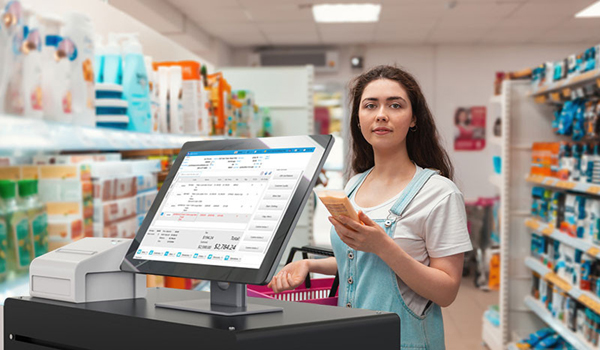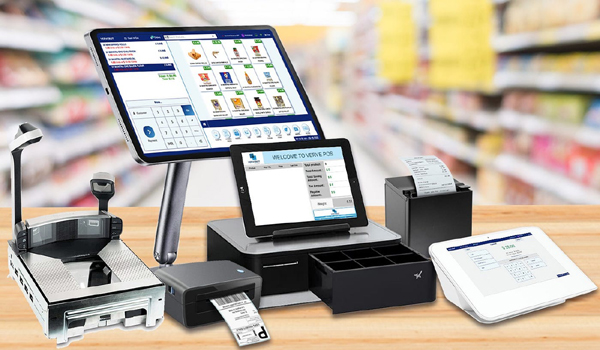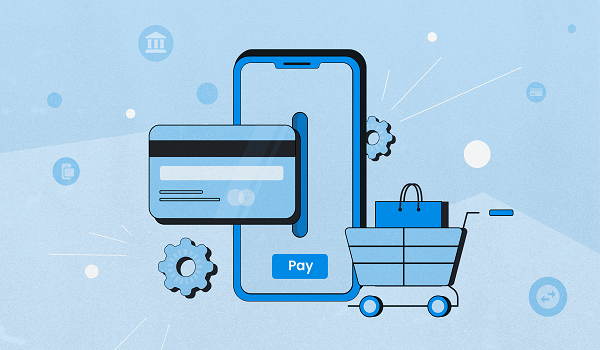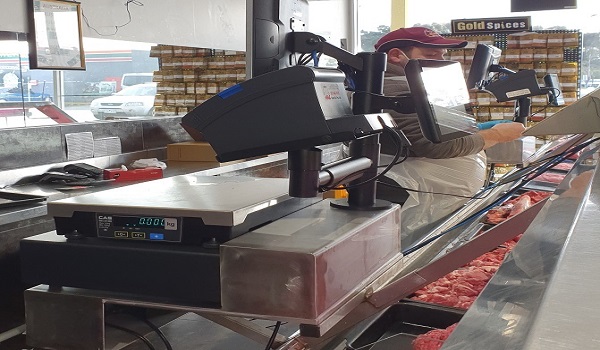
POS Inventory Management Software United States
In the dynamic world of retail, efficiently managing your point-of-sale (POS) inventory is essential for success. Whether you're running a small boutique or a large chain of stores, keeping track of your inventory can be a daunting task. Fortunately, modern technology has brought us POS inventory management software, a game-changer for businesses in the United States. We'll explore three crucial aspects of POS inventory management software and how it can revolutionize your business operations.
The Evolution of POS Inventory Management Software
The evolution of POS Inventory Management Software in the United States can be traced back to the late 20th century when businesses began computerizing their operations. Initially, these systems were rudimentary, serving primarily as cash registers. However, as technology advanced, so did the capabilities of POS systems.
Basic Cash Registers: In the past, businesses relied on manual cash registers that merely recorded sales transactions. Inventory tracking was labor-intensive and prone to errors.
Early POS Systems: The early 1990s saw the introduction of more advanced POS systems that integrated sales and inventory management. These systems provided basic features for inventory control.
Web-Based Solutions: With the rise of the internet, web-based POS Inventory Management Software gained popularity. This allowed businesses to access real-time data from anywhere.
Cloud-Based Systems: The cloud revolutionized POS Inventory Management Software by offering scalability, data security, and accessibility. Small and large businesses alike embraced cloud-based solutions.
Mobile POS: The advent of smartphones and tablets enabled the development of mobile POS solutions, allowing businesses to conduct sales and manage inventory on-the-go
Inventory Accuracy and Real-time Tracking
Accurate Inventory and Real-Time Tracking are essential elements of efficient inventory management, especially in businesses employing point-of-sale (POS) inventory management software. Let's take a closer look at what these concepts involve:
Inventory Accuracy
Definition: Inventory accuracy refers to the degree of precision and correctness in recording and maintaining a company's inventory levels. It is a measure of how closely the recorded stock levels match the actual physical stock in a warehouse or store.
Importance: High inventory accuracy is crucial for businesses because it directly affects various aspects of operations, including customer satisfaction, cost control, and decision-making.
Challenges: Inventory accuracy can be challenging to maintain using manual methods due to the potential for human errors in data entry, counting, and tracking.
Solution: Inventory management software helps improve accuracy by automating the tracking process and reducing reliance on manual data entry. Barcodes, RFID tags, and scanning devices are often used to update inventory levels in real time.
Real-time Tracking
Definition: Real-time tracking, in the context of inventory management, means continuously monitoring and updating the status and location of inventory items as they move in and out of a business's stock.
Importance: Real-time tracking provides businesses with an up-to-the-minute view of their inventory, enabling them to make informed decisions, reduce stockouts, minimize overstocking, and respond promptly to changing demand.
Benefits: Real-time tracking offers several benefits, including improved visibility into stock levels, better control over reorder points, faster response to stock discrepancies, and enhanced customer service.
Technology: To achieve real-time tracking, inventory management software often utilizes technology such as barcoding or RFID. When products are sold or restocked, these technologies update the system instantaneously, ensuring that the inventory database reflects the current state of stock levels.
Inventory Management Software Process
Initial Setup: Each product in the inventory is assigned a unique identifier, such as a barcode or RFID tag.
Inventory Tracking: When products are received, sold, or moved within the business, employees scan the items using handheld devices or fixed scanners. This action updates the inventory database in real time.
Reporting: Managers and employees can access the inventory database to view stock levels, track sales trends, set reorder points, and generate reports. The data is always up to date, providing a real-time snapshot of inventory status.
Inventory Optimization: Businesses can use the data collected through real-time tracking to make informed decisions about reorder quantities, pricing, and supplier relationships, leading to more efficient operations.
Enhanced Customer Experience
Enhancing the customer experience is a strategic approach that businesses adopt to create a positive and memorable interaction between customers and their brand or product. This strategy aims to meet and exceed customer expectations, build strong customer relationships, and ultimately drive customer loyalty. Enhanced customer experience encompasses various aspects of a customer's journey, from the initial contact with the brand to post-purchase support.
Seamless and Convenient Interactions: Enhanced customer experience begins with making interactions with the business as smooth and convenient as possible. This includes user-friendly websites, easy-to-navigate mobile apps, and efficient customer service channels.
Personalization: Businesses gather data on customer preferences, behaviors, and purchase history to tailor their offerings and communications. Personalization can involve recommending products based on past purchases or addressing customers by their names.
Efficient Customer Service: Providing prompt and helpful customer support is essential. This involves addressing inquiries, resolving issues, and assisting customers with their needs in a timely and friendly manner.
Clarity and Reliability: Fostering reliability with customers is paramount. This can be achieved through straightforward pricing, offering comprehensive product details, and maintaining forthright communication. Brands that embody clarity and reliability tend to inspire customer loyalty.
Consistency Across Channels: Whether a customer interacts with a business in-store, online, via social media, or through a call center, the experience should be consistent. This ensures that customers receive a uniform level of service and information.
Convenience and Accessibility: Businesses strive to make their products and services easily accessible to customers. This can include offering multiple payment options, fast shipping, and hassle-free returns.
Personalized Recommendations: Enhanced customer experience often involves using data analysis to offer product recommendations that are relevant to a customer's interests and needs. This can increase cross-selling and upselling opportunities.
Feedback and Improvement: Actively seeking customer feedback and using it to make improvements is a fundamental aspect of enhancing the customer experience. This demonstrates that the business values the customer's opinion and is committed to continuous improvement.
Post-Purchase Engagement: The customer experience doesn't end at the point of purchase. Engaging with customers after their purchase, such as through follow-up emails or surveys, can help gather feedback and build long-term relationships.
Surprise and Delight: Occasionally, businesses go above and beyond to surprise and delight their customers. This can include unexpected discounts, personalized thank-you notes, or exclusive access to events or content Crisis Management.
Data-Driven Decision-Making
In today's competitive market, data is a priceless asset. POS inventory management software not only helps you gather data but also provides tools to analyze it. This data-driven approach empowers you to make informed decisions that can drive your business forward.
You can use the software to track sales trends, monitor inventory turnover rates, and optimize pricing strategies. It also helps in supplier management by identifying the most reliable and cost-effective suppliers. With the right insights, you can adjust your inventory and marketing strategies, identify areas for improvement, and ensure that your business remains agile and responsive to changing market conditions.
Conclusion
In the United States, the retail landscape is continually evolving, and businesses must adapt to stay competitive. POS inventory management software offers a powerful solution to the challenges of inventory management, customer experience enhancement, and data-driven decision-making. By embracing this technology, your business can streamline operations, boost efficiency, and ultimately achieve greater success in the dynamic world of retail. Make the smart choice for your business – invest in POS inventory management software today.









